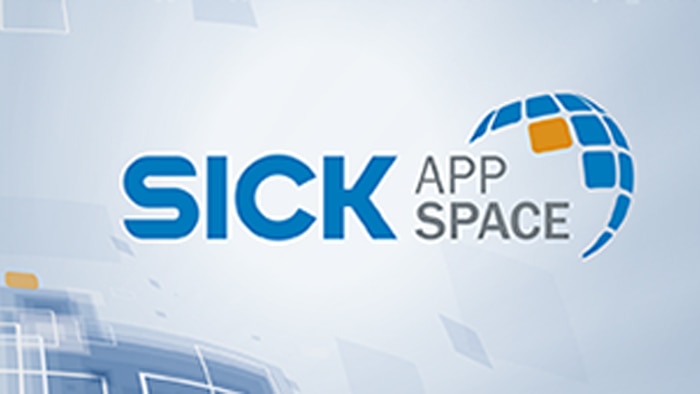Flexible solution concepts for software and hardware
With programmable sensor solutions, and flexible solution concepts consisting of software and hardware, SICK is taking a major step towards implementing Industry 4.0 and networking the industrial value-creation chain. Binary judgements such as ‘yes or no’ and ‘good or bad’ will be removed from the development of individual applications, which will be based on a wide variety of data and their intelligent evaluation. This opens up undreamt-of availability horizons for industrial production processes.
SICK has created a platform for its programmable sensors – the SICK AppSpace. The SICK AppSpace ecosystem offers system integrators and OEMs the freedom and flexibility to develop their application software directly within the programmable SICK sensors, to specifically meet the particular tasks of the end-user. Thus customized solutions can be implemented according to individual customer requirements.
The SICK AppSpace combines software and hardware, and consists of two elements: programmable SICK sensors and the SICK AppStudio, an application development kit for sensor applications. The flexible architecture and the programmable devices enable the generation of data for cloud services within the context of Industry 4.0. The application software is located within the sensor – and information can be transferred directly from the sensor. Users will therefore be provided with optimum support in the areas of quality assurance, traceability and predictive maintenance.
The SICK AppStudio – from developers for developers
The SICK AppStudio is used to develop customer-specific sensor applications on programmable SICK devices. In addition to flexible programming potentials and service programs, it also offers access to the SICK Software Toolbox and established image-processing libraries, such as HALCON. Thanks to Lua scripting with a high level of integrated development support (e.g. auto-complete), the development of sensor apps for the programmable sensors is easily integrated in existing development processes. The newly developed sensor app is then rolled out on a variety of programmable SICK sensors, enabling its use on several different SICK sensors.
The user interface for the machine operator can be individually created in the form of a web Graphical User Interface (GUI) using a graphic ViewBuilder. PackageBuilder combines all the software components into a single package, securely defining access and copying rights. In addition, the numerous sample apps already available ensure rapid familiarization and the swift creation of sensor apps.
The SICK AppSpace Community
The SICK AppSpace Developers’ Club enables members to take advantage of special offers on demo kits and laboratory equipment. Members are also entitled to participate in the annual SICK AppSpace Developers’ Conference. In addition to interesting presentations and marketplaces for developed SICK AppSpace solutions, the Conference also offers an opportunity for exchanging experiences and networking with other members of the SICK AppSpace Community. Thus members will themselves play a role in determining the further development of the SICK AppSpace ecosystem within the framework of BarCamps.
Networked reality
Given the development of Industry 4.0, it can be seen that data and objects must be holistically detected, digitalized and passed on to a higher-ranking system. Our approach involving programmable sensors and the SICK AppSpace supports our customers in meeting these prerequisites and optimizing their quality products. We provide the freedom that allows our customers to adapt to their market conditions better and in a more target-oriented manner. Thus solutions are created that are less complex and that most certainly do not always involve only vision sensors. We will therefore expand the new product department of Vertical Integration Products and move across the entire range of technologies. Because, fundamentally, sensor apps are designed in such a way that they are generated independently of hardware. The reusability of sensor apps on differently programmed sensors reduces development effort. Furthermore, existing solutions can be adapted retroactively to future tasks. This, however, also means that future developers and users will have to collaborate more closely with one another in order to jointly determine what is really required regarding the machine and the particular application. Thus networking will not merely be implemented within cyber-physical systems (CPSs), but also in reality. Namely, a digitalized and networked world.
Learn More
You will find more information here: www.sick.com/sick-appspace



